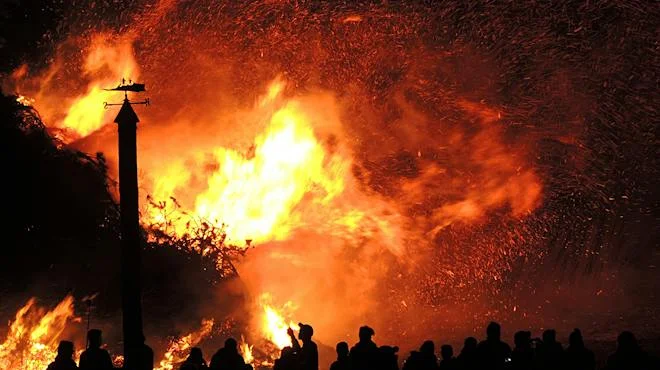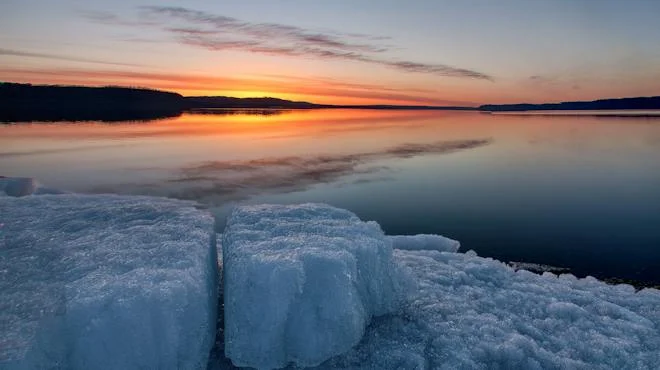Welcome to another poetic journey! We’re thrilled to have you here as we unravel the layers of meaning in our latest poem analysis, Robert Frost’s “Fire and Ice.”
Fire and Ice by Robert Frost Some say the world will end in fire, Some say in ice. From what I've tasted of desire I hold with those who favor fire. But if it had to perish twice, I think I know enough of hate To know that for destruction ice Is also great And would suffice.
Among the many literary wonders, some poems stand out like brilliant constellations against the night sky. One such celestial piece is “Fire and Ice” composed by the iconic American poet, Robert Frost.
This analysis aims to uncover the essence of this poem, revealing its rich layers and timeless applications that have fascinated readers for years. So, let’s unravel the layers of meaning behind “Fire and Ice.”
About the Artist: Robert Frost
Before we dig into the details of “Fire and Ice,” it’s crucial to know the man behind the verses. Robert Frost, a big name in American poetry, made a mark by blending rural charm with profound wisdom.
Born in San Francisco in 1874, Frost’s poems often painted vivid pictures of simple country life, and “Fire and Ice” is no exception. His poetry invites readers to think deeply, exploring life’s complexities with words that resonate.
Context of the poem
Several factors influenced Robert Frost in writing “Fire and Ice.” The poem, penned in 1920 and later included in Frost’s 1923 collection, New Hampshire, drew inspiration from Dante’s “Inferno”.
Frost was particularly intrigued by the vivid descriptions of Hell in Inferno, which interestingly portrayed Hell with nine layers or rings—a parallel to the nine lines in “Fire and Ice.” Dante’s narrative, depicting the deepest layers of Hell as both burning with flame and submerging in unyielding ice, left a lasting imprint on Frost’s imagination.

Additionally, an encounter with American astronomer Harlow Shapley played a role in shaping the poem. During a discussion about the end of the world, Shapley shared two possible scenarios: one where the sun explodes, incinerating the planet, and another where the sun explodes but fails to incinerate the planet, leading to a gradual demise as life withers, freezes, and perishes.
This conversation likely fueled Frost’s contemplation on the destructive forces of fire and ice as symbolic representations of human emotions, weaving scientific concepts with poetic expression.
The aftermath of World War I and the world’s transition into the 20th century undoubtedly cast a shadow on the cultural and artistic landscape, influencing the themes explored in Frost’s work. This period marked a time of societal reflection and a reevaluation of traditional values.
Unlike the usual violent scenarios of doomsday, Frost takes us on a poetic journey where fire and ice are not just elemental forces but metaphors for intense human emotions.
In this brief yet powerful poem, the legendary American poet contemplates the destructive potential of desire (“fire”) and hatred (“ice”) and prompts readers to reflect on this delicate balance of emotions. So, let’s unravel the layers of meaning behind “Fire and Ice.”
Theme and Tone
The main idea in “Fire and Ice” reflects the destructive power of extreme feelings within people. Frost skillfully juxtaposes these elemental forces, “fire” for desire and “ice” for hatred, showing how these emotions, when uncontrolled, can lead to serious consequences.
Through these metaphors, he explores the delicate balance between passion and indifference, hinting at the catastrophic consequences when either of them dominates over the other.
The poem has a thoughtful tone, not too alarmed or detached. Frost’s choice of words, simple yet powerful, makes us think about the weight of our emotions. It’s rather a warning, prompting us to recognize the impact of our feelings on our lives.
The Form and Structure of the Poem
Looking at the poem’s structure, Frost’s skill to steer words tactfully becomes evident. With nine lines split into three groups of three (tercets), the poem adopts the terza rima rhyme scheme, a specific rhyme pattern. In fact, mirrors the style of classic works like Dante’s “Divine Comedy.” This choice connects the poem to traditional forms while keeping it easy to understand.
The poem’s short length adds to its impact. Each line is like a quick stroke of a paintbrush, contributing to the overall picture of a looming disaster. Frost’s choices in how he structures the poem, along with his clear language, make it a piece that speaks to both serious literature lovers and everyday readers.
Line-by-Line Analysis of “Fire and Ice” by Robert Frost
Line 1: “Some say the world will end in fire,”
Frost kicks off with a statement that sets the apocalyptic tone. The use of “Some say” introduces an immediate sense of ambiguity, involving readers in speculation. It also initiates an antithesis to the subject of the poem, creating a conflict of interest.
The choice of the word “fire” carries potent symbolism, evoking images of destruction, chaos, and intensity. Fire is a primal force, often associated with passion, desire, and even purification.
In the context of the poem, it becomes a metaphor for the overwhelming and potentially catastrophic power of human emotions. This metaphor of the world ending in a natural disaster like “fire” serves as a bold statement, painting a vivid picture of destruction.

Line 2: “Some say in ice.”
This precise statement stands as an anaphora to balance the first line, which further establishes the duality presented in the poem.
The word “ice” carries its own symbolic weight, suggesting coldness, indifference, and emotional frigidity. In this context, it becomes a metaphor for a world ending not in the blaze of passion but rather in a state of emotional numbness or hatred. Frost’s deliberate use of opposing elements, fire and ice can be interpreted as a metaphor for contrasting human emotions. The simplicity of the statement enhances its impact, inviting readers to ponder on the potential consequences of extreme feelings.
Line 3: “From what I’ve tasted of desire,”
Here, Frost introduces a personal touch, shifting from the collective to the individual perspective. The use of “I’ve tasted” adds a nuanced layer, making desire a tangible and relatable experience. The word “tasted” suggests a visceral, almost palpable encounter with desire, engaging readers emotionally.
Line 4: “I hold with those who favor fire.”
Frost aligns himself with those who predict the world’s end in fire. This creates a sense of allegiance, implying the poet’s personal preference for passion over the coldness of indifference. The word “favor” suggests a deliberate choice, framing the poet’s stance on the destructive power of desire.
Line 5: “But if it had to perish twice,”
The conditional “if” introduces a hypothetical scenario, subtly shifting the tone. Frost considers an alternate fate, raising the possibility of a secondary demise. The use of “perish twice” adds a layer of inevitability and a sense of darkness. The wavering between the choices could be another implication of how quickly human emotions can be twisted into a different chain of thoughts.
To be more precise on what the poet is trying to infer, he intends to say that if passion or strong desires (fire) was not enough to destroy the word, then hatred (ice) would step in.
Line 6: “I think I know enough of hate”
The transition from desire to hate is marked by a stark shift. Frost’s use of “I think I know enough” implies a depth of understanding, inviting readers to side with him on the destructive potential of “ice”. The poet’s personal reflection invites the reader to know more about what the poet intends to say.
Line 7: “To say that for destruction ice”
Frost masterfully employs personification, attributing the capacity for destruction to “ice.” The choice of “ice” as a symbol for indifference and hatred takes on a chilling significance. The deliberate use of the word “destruction” reinforces the dangerous atmosphere, creating a powerful image.

Line 8: “Is also great”
Line 9: “And would suffice.”
The simplicity of these lines implies their significance. Frost, through understatement, emphasizes the intense power of ice. If you look closer, the three lines add up to “To say that for destruction, ice is also great, and would suffice”. The use of “also great” ironically highlights the parallel destructive potential of both fire and ice.
The word “suffice” suggests adequacy or satisfaction, highlighting that ice alone, is enough to create destruction. Yet in the context of destruction, it takes on an unsettling overtone.
The poem concludes with a sense of inevitability, leaving readers to struggle with its implications of human emotions on the world’s fate.
Conclusion
The poem “Fire and Ice” by Robert Frost, unfolds a thought-provoking concept on human emotions and their capacity for destruction. Frost leans towards the fiery end, explaining he understands desire but also sees the chilling power of hate. The tone is thoughtful, making you really think about strong feelings and their consequences.
The poet seems to be giving a warning, telling us to be careful with our intense emotions. The poem is for everyone, cautioning about how our feelings can affect not just us but the whole world. It’s Frost’s own perspective, giving us a glimpse into how he sees the impact of emotions. The poem leaves you thinking about the big role our feelings play in shaping our world.
RELATED POSTS
View all




